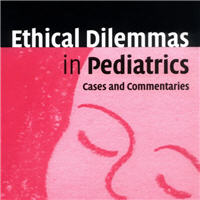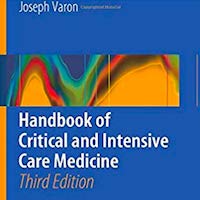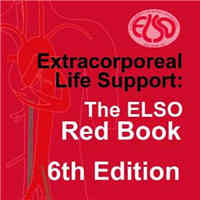Tag: treatment
Neutrophil Extracellular Traps Are Elevated in Patients with Pneumonia-related ARDS
Bronchoalveolar neutrophil extracellular trap concentration was not significantly associated with mechanical ventilation duration in pneumonia-related ARDS. The acute respiratory distress syndrome (ARDS) is the most severe... read more
Research Ethics and Informed Consent in Critical Care
Research studies in critically ill populations pose many unique regulatory and ethical challenges that have implications for study design and execution. The life-threatening nature of conditions being studied and the urgency... read more
European Guideline on Managing Post-traumatic Bleeding: 5th Edition
An updated guideline on the management of significant bleeding and coagulopathy following major trauma has been released by the pan-European, multidisciplinary Task Force for Advanced Bleeding Care in Trauma. The document,... read more
Ketamine In Acute and Chronic Pain Management
The view of chronic pain as a symptom of a disease, rather than a disease state itself, has contributed to neglect in treating this condition. Although it is generally acknowledged that patients with chronic pain use significantly... read more
Diagnosis and Management of Acute Exacerbations of COPD – Pharmacology CME
As more and more patients present to the ED with symptoms that suggest an acute exacerbation of Chronic Obstructive Pulmonary Disease (COPD) –worsening dyspnea, cough and sputum production – emergency clinicians can... read more
Noninvasive Ventilation as Acute Therapy
Noninvasive ventilation (NIV) is widely used in ICU patients to treat or to prevent acute respiratory failure (ARF). Whereas its physiological effects are clearly beneficial in hypercapnic patients, it could be deleterious... read more
Incidence, Severity, and Detection of Blood Pressure Perturbations after Abdominal Surgery
Intraoperative and postoperative hypotension are associated with myocardial and kidney injury and 30-day mortality. Intraoperative blood pressure is measured frequently, but blood pressure on surgical wards is usually measured... read more
Updates and Controversies in the Early Management of Sepsis and Septic Shock
For patients in the ED who are suspected of having sepsis, swift, effective management is vital to improving outcomes. This issue reviews the latest evidence on the diagnosis and treatment of sepsis and septic shock: ... read more
Clostridium difficile infection in the ICU
About 10% of patients with diarrhea will test positive for CDI. Around 2% of ICU patients develop an episode of CDI. Estimating the severity of CDI is essential for prognosis and therapy. Diagnosis and estimation of disease... read more
Threshold Analysis as an Alternative to GRADE for Assessing Confidence in Guideline Recommendations Based on Network Meta-analyses
Guideline development requires the synthesis of evidence on several treatments of interest, typically by using network meta-analysis (NMA). Because treatment effects may be estimated imprecisely or be based on evidence lacking... read more
Dysphagia in the ICU: Epidemiology, Mechanisms, and Clinical Management
In the light of the fact that the clinical consequences of ICU-acquired dysphagia (e.g., aspiration-induced pneumonitis/pneumonia) can often be observed on ICUs, more data on underlying mechanisms and/or risk factors seems... read more
Personalization of Arterial Pressure in the Perioperative Period
This review aims to discuss recent findings on the relationship between intraoperative arterial hypotension and organ dysfunction in surgical patients and examines the available evidence for personalizing blood pressure (BP)... read more
Ethical Dilemmas in Pediatrics
Children in precarious health present particular problems for healthcare professionals because of their intimate relation to their family, and because of the family's need to provide major long-term source of support and... read more

Determination of Brain Death Under Extracorporeal Life Support
The worldwide use of extracorporeal lung/life support is increasing in severe lung failure (veno-venous extracorporeal membrane oxygenation, vvECMO) or in cardiac arrest/severe circulatory failure (veno-arterial ECMO, vaECMO).... read more
Increased Hospital-Based Physical Rehabilitation and Information Provision After ICU Discharge
Post-ICU hospital-based rehabilitation, including increased physical and nutritional therapy plus information provision, did not improve physical recovery or HRQOL, but improved patient satisfaction with many aspects of recovery.... read more
Effect of Piperacillin-Tazobactam vs Meropenem on 30-Day Mortality for Patients With E coli or Klebsiella pneumoniae Bloodstream Infection and Ceftriaxone Resistance
Among patients with E coli or K pneumoniae bloodstream infection and ceftriaxone resistance, definitive treatment with piperacillin-tazobactam compared with meropenem did not result in a noninferior 30-day mortality. These... read more
Management of Pediatric Severe Traumatic Brain Injury
This article provides an algorithm of clinical practice for the bedside practitioner based on the available evidence, treatment protocols described in the articles included in the 2019 guidelines, and consensus that reflects... read more
Acute Hyperglycemic Emergencies
As diabetes prevalence increases in the US, critical care nurses need to be familiar with the acute hyperglycemic emergencies they may encounter in the ED or ICU. This article focuses on the diagnosis of, various treatments... read more
Intrathoracic Pressure Regulation Therapy Applied to Ventilated Patients for Treatment of Compromised Cerebral Perfusion from Brain Injury
These data support the notion that active intrathoracic pressure regulation, in this limited evaluation, can successfully augment cerebral perfusion by lowering intracranial pressure and increasing mean arterial pressure... read more
Association of Vasopressin Plus Catecholamine Vasopressors vs Catecholamines Alone With Atrial Fibrillation in Patients With Distributive Shock
In this meta-analysis, the addition of vasopressin to catecholamine vasopressors compared with catecholamines alone was associated with a lower risk of atrial fibrillation. However, findings for secondary outcomes varied.... read more
How Should We Relate to Unreasonable Families in the ICU?
Most families have never suffered through a loved one experiencing prolonged critical illness and respiratory failure (defined as ventilator dependence for weeks, usually with a tracheostomy). But each year, more do. An estimated... read more
Choice of Catheter Size for Infants in Continuous Renal Replacement Therapy
Small size central vascular catheters display optimal rheologic performances in terms of pressures and flows particularly when the renal replacement therapy (RRT) device is equipped with pumps proportional to central vascular... read more









